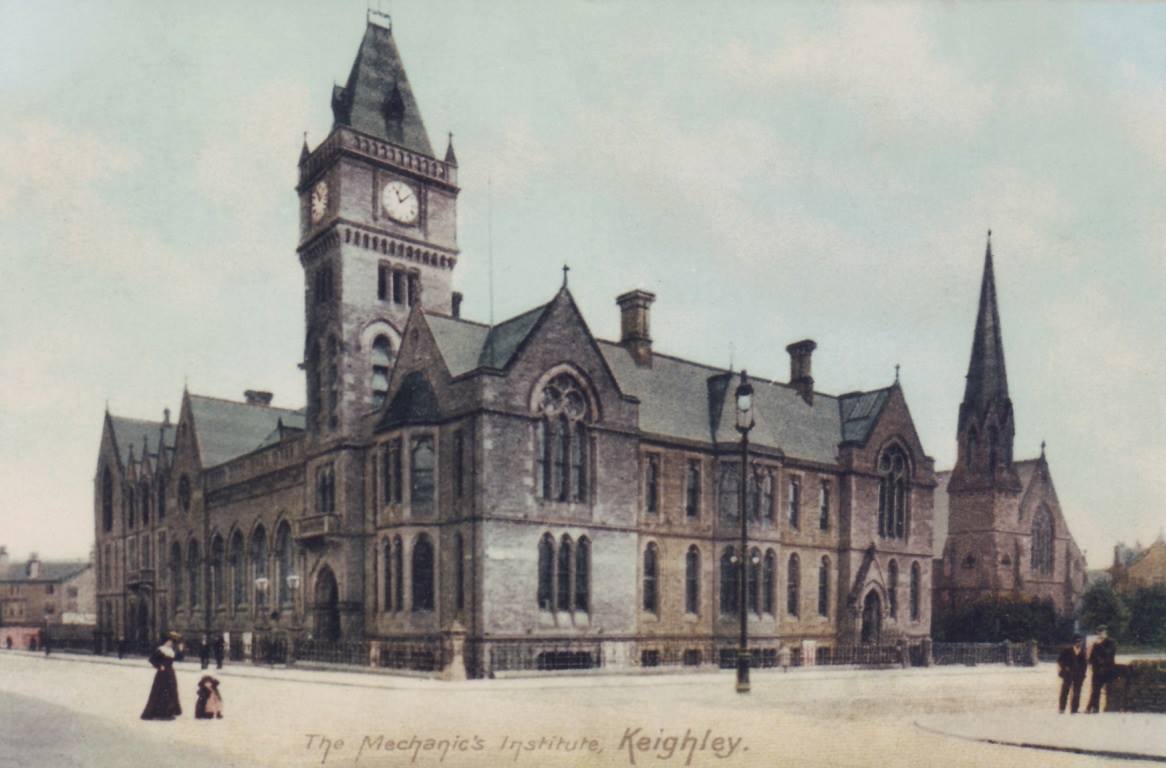Other providers of education include the Mechanics Institutes and the WEA. Mechanics Institutes were intended to provide educational opportunities for working men although there are examples of them becoming more like clubs for factory owners and the professional classes. In my home town, 3 daughters of a local clergyman would walk to town in order to borrow books from the Mechanics Institute Library. You might have heard of them: Charlotte Emily and Anne Bronte. As a backlash, the local Temperance Movement set up a meeting place “free from the influence of alcohol” where members of the labouring classes (men!) could meet, read newspapers and listen to lectures. A number of non-conformist churches and chapels had their own educational establishments too where it is possible to locate ancestors.
I will conclude with a story about the boy from the workhouse who went to university, which I hope illustrates the fascinating details and information which can be gleaned from education records. I was looking at workhouse records and came across the story of 5 orphaned brothers, one of whom was called John Dawson, aged 9 in 1840, when a letter had been written to relatives seeking financial support for John and his four brothers, who were aged 13, 11 7 and 5 . Two of the relatives were clergymen and one of these offered to give John a home. There is evidence from workhouse records that early in 1841, John made the trip from West Yorkshire to Modbury in Devon. Fortunately he arrived in time for the 1841 census, where he can be found living with the Rev.Isaac Dawson and his wife Elizabeth.
By 1851, John was a “commoner” at Brasenose College Oxford. I contacted the archivist at Brasenose College who was able to find the following information:
According to the Brasenose College Register (1909) and Joseph Foster's Alumni Oxonienses 1715-1886 (1891) John Dawson was born in Yorkshire, the third son of William of Sutcliffe, Yorkshire. He matriculated (the formal ceremony of admittance as a member of the University) on 2 February 1849, aged 18. At matriculation his status was given as armigeri filius, son of an esquire (originally a man entitled to bear heraldic arms). He was a Commoner (i.e. he did not hold a scholarship or exhibition). He was awarded his B.A. in 1852 and his M.A. in 1857. The Master of Arts degree conferred full membership of the University with voting rights.
His father was indeed called William and Sutcliffe was part of the address where he lived, according to the Parish Registers. The information also mentioned about being the son of an Esquire and it is highly probable that this information came from Isaac, who was in fact John’s great uncle. Whilst I have not been able to find definitive evidence, I have reason to believe there is an element of truth in the statement. By 1861 John was back living in Modbury, where he can also be found in the 1871 and 81 census records. By 1861 John was quite a wealthy young man, having inherited from Isaac:
“the residue of my property of what nature or kind soever whether personal or real to John Dawson of Modbury Bachelor of Arts of Brasenose College Oxford my grandnephew also I give and devise to the same John Dawson of Modbury etc.all my freehold property at Modbury consisting of houses gardens and an orchard and my freehold house and premises at Saltash Cornwall“. John was the executor of the will.
In 1891, John was a Boarder at a lodging house in Oxford, still “living on his own means”. However it would appear by the late 1880s life seems to have started to go a little haywire for John. I located a newspaper cutting which related to a “John Dawson MA of Brasenose College” being summoned by the Oxford Vice Chancellors Court for disorderly conduct early in 1889. This conduct involved John striking one of the college staff with a stick, amongst other less serious misdemeanours.
Oxford University Archives were able to provide me with copies of the case notes. The disorderly conduct involved John striking one of the college staff with a stick, amongst other less serious misdemeanours, and an unpaid bill. John failed to appear before the court and a warrant for “the apprehension of the defendant” was issued. Eventually the university instructed baliffs to seize John’s possessions. Oxford University Archives have been able to supply me with copies of the documents relating to the case including the bailiffs levy, a list of the goods seized , and the result of the auction of the goods.
There are also a couple of other newspaper cuttings which mention a John Dawson being drunk and disorderly. The area of Oxford is that shown in the court papers. From the above, you can see how traditional records have been complemented by the university records and I hope this blog will encourage you to explore your ancestors’ education.

 RSS Feed
RSS Feed
